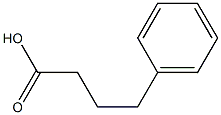All AbMole products are for research use only, cannot be used for human consumption.

4-Phenylbutyric acid is an inhibitor of HDAC, inhibits the growth of NSCLC Cell Lines at 2 mM. 4-Phenylbutyric acid is also an inhibitor of endoplasmic reticulum (ER) stress. 4-Phenylbutyric acid (0-5 mM) inhibits ASFV infection in a dose-dependent manner. LPS decreases the level of p62, whereas 4-Phenylbutyric acid reverses this decrease upon LPS stimulation for 48 h. The percentage of cells with LPS-induced AVOs is increased at 48 h, whereas 4-Phenylbutyric acid significantly reduces this percentage. Specifically, the percentage of cells with AVOs decreases from 61.6% to 53.1% upon 4-Phenylbutyric acid treatment, supporting that 4-Phenylbutyric acid inhibits LPS-induced autophagy.

Pestic Biochem Physiol. 2024 Dec 28.
An in-depth analysis of the effects of excessive acetochlor exposure on chicken liver health
4-Phenylbutyric acid (4-PBA) purchased from AbMole

Small. 2023 Mar 12;e2208063.
2D MoS2 Nanosheets Induce Ferroptosis by Promoting NCOA4-Dependent Ferritinophagy and Inhibiting Ferroportin
4-Phenylbutyric acid (4-PBA) purchased from AbMole

New Phytol. 2023 Aug 22.
Orosomucoid proteins limit endoplasmic reticulum stress in plants
4-Phenylbutyric acid (4-PBA) purchased from AbMole

J Cell Physiol. 2023 Jan;238(1):151-164.
Polystyrene nanoplastics aggravates lipopolysaccharide-induced apoptosis in mouse kidney cells by regulating IRE1/XBP1 endoplasmic reticulum stress pathway via oxidative stress
4-Phenylbutyric acid (4-PBA) purchased from AbMole

Chemosphere. 2022 Nov;307(Pt 2):135962.
Fine particulate matter induces heart defects via AHR/ROS-mediated endoplasmic reticulum stress
4-Phenylbutyric acid (4-PBA) purchased from AbMole

Am J Pathol. 2021 Dec 5;192:468-483.
The role of inactivated NF-κB in the occurrence of premature ovarian failure
4-Phenylbutyric acid (4-PBA) purchased from AbMole
| Molecular Weight | 164.2 |
| Formula | C10H12O2 |
| CAS Number | 1821-12-1 |
| Solubility (25°C) | DMSO ≥ 30 mg/mL Water 3 mg/mL at 40 ºC |
| Storage | 2-8°C, dry, protect from light, sealed |
| Related HDAC Products |
|---|
| CM-444
CM-444 is an inhibitor for HDAC and DNA methyltransferases (DNMT) with IC50 values of 6 nM-0.6 μM and 1.8-2.3 μM, respectively. CM-444 is an inducer for the differentiation of acute myeloid leukemia cells. CM-444 exhibits anti-leukemic activity and improves the survival rate in mouse models. |
| CM-1758
CM-1758 is a histone deacetylase (HDAC) inhibitor. CM-1758 inhibits tumor growth in vivo. CM-1758 induces acetylation of non-histone proteins in acute myeloid leukemia cells. |
| T-518
T-518 is an orally active, selective, and blood-brain barrier permeable HDAC6 inhibitor with an IC50 value of 36 nM for human HDAC6. |
| SE-7552
SE-7552, a 2-(difluoromethyl)-1,3,4-oxadiazole (DFMO) derivative, is an orally active, highly selective, non-hydroxamate HDAC6 inhibitor with an IC50 of 33 nM. |
| BRD9757
BRD9757 is a potent, capless and selective HDAC6 inhibitor with an IC50 of 30 nM. |
All AbMole products are for research use only, cannot be used for human consumption or veterinary use. We do not provide products or services to individuals. Please comply with the intended use and do not use AbMole products for any other purpose.


Products are for research use only. Not for human use. We do not sell to patients.
© Copyright 2010-2024 AbMole BioScience. All Rights Reserved.
